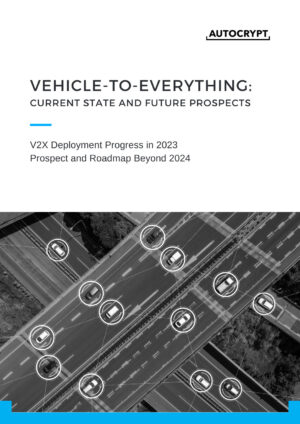White Paper: V2X, Current State and Future Prospects
Vehicle-to-Everything (V2X) communication technology is widely regarded by industry experts as a promising solution to improve road safety and provide relief for traffic congestion. By enabling real-time data sharing between vehicles (V2V), points of infrastructure (V2I), and pedestrians (V2P), V2X allows vehicles to see through obstacles and gain information on live traffic from a radius of more than one kilometer.
V2X is often compared to Advanced Driver-Assistance Systems (ADAS), in that both technologies aim to improve road safety and traffic efficiency by reducing the likelihood of collisions and smoothing traffic flow. However, the two technologies use different approaches to achieving their objectives. ADAS are based on improving a vehicle’s senses of its surroundings using cameras, radar, and lidar, whereas V2X is based on improving a vehicle’s knowledge of its surroundings by having onboard units (OBU) and roadside units (RSU) exchange messages in real time.
Unfortunately, recent updates on V2X deployment have largely been overshadowed by the media hype surrounding electric vehicles and ADAS-enabled “self-driving”, making publicly available information on V2X very limited, despite the market growing behind the scenes at a rapid rate.
This white paper seeks to fill this information gap by providing a detailed overview of V2X, including answers to some common questions like:
- Is V2X technology ready for large-scale commercial deployment?
- How has the industry overcome the technical, practical, and security challenges in V2X?
- What challenges remain unsolved?
- What can be expected in the upcoming five, ten, and 15 years?

